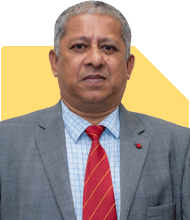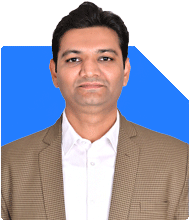Ramalingam Kalirajan |8317 Answers |Ask -Follow
Mutual Funds, Financial Planning Expert - Answered on May 26, 2024
He has an MBA in finance from the University of Madras and is a certified financial planner.
He is the director and chief financial planner at Holistic Investment, a Chennai-based firm that offers financial planning and wealth management advice.... more

Family of 2, 55 Years, no loans, monthly expenses Rs.70K, own house, no fixed income after say 62 years, normal like expectancy 80 years (anything can happen though) - What should be corpus on hand at 62 years to continue same life style considering ever growing inflation. Thanks.
Planning for retirement is crucial for financial security. At 55, you have some years to build your corpus. Considering your current lifestyle, expenses, and inflation is essential for accurate planning.
Current Expenses and Future Projections
Your monthly expenses are Rs 70,000. To maintain the same lifestyle after retirement, consider inflation. Inflation reduces purchasing power over time. This means your expenses will increase in the future.
Calculating Future Monthly Expenses
Assume an average inflation rate of 6%. Your monthly expenses of Rs 70,000 today will be significantly higher by the time you turn 62. Using an inflation rate of 6%, your future expenses can be calculated.
Estimating Retirement Corpus
To sustain your lifestyle, you need to estimate the total corpus required. This corpus should cover your expenses from age 62 to your expected lifespan, which is 80 years.
Factoring in Inflation
Assuming your expenses grow due to inflation, the corpus calculation must factor in this growth. This ensures your corpus is adequate for future needs.
Inflation-Adjusted Expenses
At 6% inflation, expenses will increase. For example, Rs 70,000 today will be more in 7 years. Calculating future expenses accurately ensures you set aside enough funds.
Retirement Corpus Calculation
A Certified Financial Planner (CFP) can help calculate your exact retirement corpus. They will consider your current expenses, inflation, and expected lifespan.
Importance of Investing Wisely
Investments play a crucial role in building your retirement corpus. Diversify your investments to balance risk and returns. Equities, debt, and hybrid funds should be part of your portfolio.
Equity Investments
Equity investments are vital for growth. They offer higher returns but come with higher risks. Choose funds with a good track record and experienced fund managers.
Debt Investments
Debt investments provide stability. They offer lower returns but are less volatile. Including debt funds in your portfolio balances the risk from equity investments.
Hybrid Investments
Hybrid funds offer a balanced approach. They invest in both equities and debt. This provides a mix of growth potential and stability, suitable for moderate risk-takers.
Avoiding Index Funds
Index funds mimic market indices and do not aim to outperform. They lack the potential for higher returns that actively managed funds offer. In retirement planning, actively managed funds can provide better growth.
Advantages of Actively Managed Funds
Actively managed funds have fund managers making investment decisions. These managers aim to outperform the market, potentially offering higher returns than index funds.
Disadvantages of Direct Funds
Direct funds require self-management and market knowledge. Regular funds, managed by professionals, offer expert guidance and timely rebalancing, ensuring alignment with financial goals.
Role of a Certified Financial Planner
A Certified Financial Planner can provide personalized advice. They assess your financial situation, risk tolerance, and goals, creating a comprehensive plan for your retirement.
Regular Monitoring and Rebalancing
Regularly monitor and rebalance your portfolio. This ensures your investments remain aligned with your goals and risk profile. Rebalancing involves adjusting your portfolio based on performance and market conditions.
Setting Clear Financial Goals
Define clear financial goals for your retirement. Knowing your goals helps in creating a focused investment strategy. This includes setting aside funds for healthcare, travel, and other post-retirement needs.
Emergency Fund
Maintain an emergency fund to cover unexpected expenses. This fund should be liquid and easily accessible. It provides financial security in case of emergencies.
Healthcare Expenses
Plan for healthcare expenses post-retirement. Medical costs tend to increase with age. Including healthcare in your retirement planning ensures you are financially prepared for medical needs.
Considering Longevity
Your retirement corpus should last throughout your retirement years. Consider the possibility of living beyond the average life expectancy. This ensures financial security in the later years of life.
Consolidating Investments
Consider consolidating your investments for better management. Fewer, well-chosen funds make monitoring and rebalancing easier. This also reduces the complexity of managing multiple investments.
Long-Term Investment Horizon
A long-term investment horizon allows for market fluctuations. Staying invested over the long term can help in achieving better returns through the power of compounding.
Tax Planning
Incorporate tax planning in your retirement strategy. Understanding tax implications on your investments and withdrawals can help in optimizing your returns and ensuring tax efficiency.
Conclusion
Planning for retirement is essential for maintaining your lifestyle. Considering inflation, investment options, and professional guidance will help in building an adequate retirement corpus. Regular monitoring and rebalancing ensure your investments stay on track.
Best Regards,
K. Ramalingam, MBA, CFP,
Chief Financial Planner,
www.holisticinvestment.in
You may like to see similar questions and answers below
Moneywize |181 Answers |Ask -Follow
Financial Planner - Answered on Jun 25, 2024
Ramalingam Kalirajan |8317 Answers |Ask -Follow
Mutual Funds, Financial Planning Expert - Answered on Jul 04, 2024
Milind Vadjikar |1206 Answers |Ask -Follow
Insurance, Stocks, MF, PF Expert - Answered on Jan 08, 2025
Ramalingam Kalirajan |8317 Answers |Ask -Follow
Mutual Funds, Financial Planning Expert - Answered on Apr 05, 2025
Nayagam P P |4478 Answers |Ask -Follow
Career Counsellor - Answered on May 05, 2025
Radheshyam Zanwar |1594 Answers |Ask -Follow
MHT-CET, IIT-JEE, NEET-UG Expert - Answered on May 05, 2025
Dr Dipankar Dutta |1196 Answers |Ask -Follow
Tech Careers and Skill Development Expert - Answered on May 05, 2025
Prof Suvasish Mukhopadhyay |608 Answers |Ask -Follow
Career Counsellor - Answered on May 05, 2025
Dr Nagarajan Jsk |365 Answers |Ask -Follow
NEET, Medical, Pharmacy Careers - Answered on May 05, 2025
Milind Vadjikar |1206 Answers |Ask -Follow
Insurance, Stocks, MF, PF Expert - Answered on May 04, 2025
Radheshyam Zanwar |1594 Answers |Ask -Follow
MHT-CET, IIT-JEE, NEET-UG Expert - Answered on May 04, 2025
Vipul Bhavsar |68 Answers |Ask -Follow
Tax Expert - Answered on May 04, 2025
Vipul Bhavsar |68 Answers |Ask -Follow
Tax Expert - Answered on May 04, 2025
Vipul Bhavsar |68 Answers |Ask -Follow
Tax Expert - Answered on May 04, 2025













.jpg)














